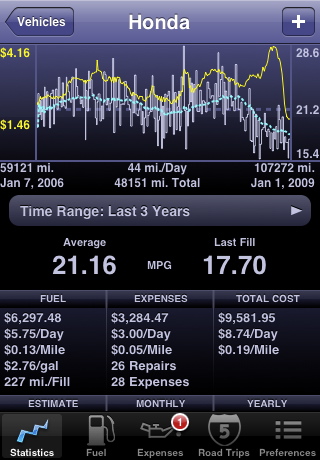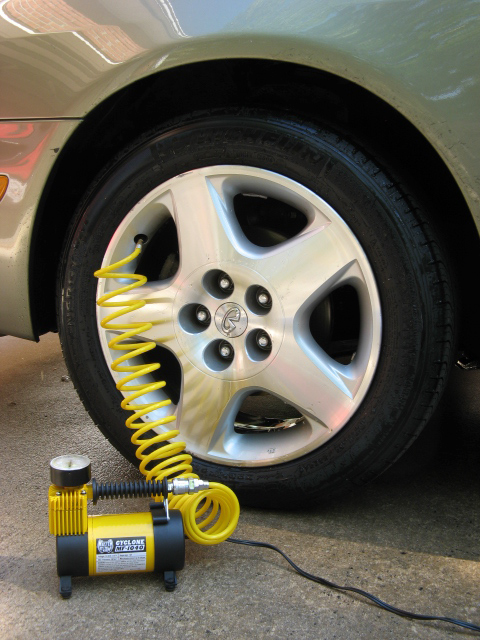With ever-tougher fuel economy regulations and the rising price of gasoline, more Americans than ever before want to know what the gas mileage of their car really is.
Keeping records of your car’s gas mileage may sound like a bore, but it will help you figure out where and how you’re driving most efficiently, improve your skill as a driver, and hopefully even save you some money.
But how do you go about doing it? Are there any techniques you should try? And how exactly do you figure out your economy?
Here are our five simple steps to tracking your car’s gas mileage.
1) Don’t believe what the on-board computer says.
Over the past decade, automakers have introduced basic gas mileage functionality into most cars, offering everything from instantaneous gas mileage figures through to overall economy figures for specific trips, a single tank of gas and even the entire lifetime of the car.
But although gas mileage gauges provide a ballpark idea of gas mileage, they’re notoriously inaccurate.
For short trips, you may not notice much of a delta between a hand-calculated figure and what the on-board computer says.
But last year, Edmunds tested various on-board computers for gas-mileage accuracy, and discovered that some were giving readings as much as 19 percent higher than real-world gas mileage.
If you’re budgeting based on an over-optimistic on-board computer reading, you may find yourself paying more for gas than you expected.
2) Keep a driving log
The smartest way to keep track of your car’s fuel consumption is to record all of your trips in a driving log.
You can do this with a smartphone app like the excellent RoadTrip for iOS, a computer spreadsheet, or even an old-fashioned note book and pen kept in your car’s glove box.
The more data you can gather the better, so get into the habit of recording the mileage every time you start a new trip.

Road Trip gas mileage tool
In addition, you may want to note the type of road you’re driving on, how long the trip lasted, the load you’re carrying, and any comments about the weather.
These won’t help you specifically work out your gas mileage, but they will help you track seasonal trends, as well as poor gas mileage when the weather is bad.
For additional accuracy, reset the odometer every time you start a new trip, making real-world gas mileage calculations more precise.
3) Measure at the pump
As part of your accurate record keeping, you’ll want to note exactly how much gas you put in every time you fill up, by noting down the figures on the gas pump.
It’s also important to note what the odometer reading is when you fill up, so you can accurately measure how many miles you’ve driven since your last visit to the gas station.
Divide the number of miles you’ve driven by the number of gallons you put in at the pump to give you a fill-by-fill gas mileage reading.
And if you’re interested in the fluctuations in gas price, don’t forget to mark that down too.
4) Keep your car in good condition
Tire pressure
As you probably know, inaccurate tire inflation and poor maintenance can have a detrimental effect on gas mileage.
To ensure these factors have minimal impact on your gas-mileage records, ensure you check your car tires regularly, and stick to manufacturer’s recommended servicing schedules.
5) Join a gas-mileage tracking site
Finally, if you’re serious about keeping accurate gas mileage records, either for your own curiosity or to improve your driving, consider joining a mileage tracking website like Fuelly.com
Not only will you be able to see your gas mileage history at a glance, but you’ll be able to compare your gas mileage with drivers of the same car all over the world.
In addition, you’ll be able to share tips and tricks with other gas-mileage trackers, making you a better, more efficient driver.
Missed anything?
Do you keep track of your car’s gas mileage? Do you have any tips and tricks to pass on?
Let us know in the Comments below.
+++++++++++













